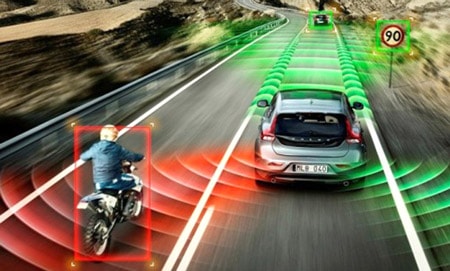How is the car safety system built?
Throughout the history of the automobile industry, manufacturers have always struggled to find and research solutions to increase vehicle safety.
 |
High-end cars are now increasingly equipped with new technologies aimed at reducing accidents. The idea behind these technologies comes from the research of dedicated engineers. Accidents often occur because drivers do not have time to handle unexpected situations on the road, leading to collisions. Therefore, safety technologies always aim at features such as brake assist, specifically brake force control, anti-lock braking in sudden situations and cruise control.
The cost of researching and developing safety systems for cars is often very expensive, in addition, these technologies are often complex, high installation costs. Therefore, most of them are only provided for luxury cars. However, some car manufacturers are still spending time researching and developing safety systems to make these features available for most car models.
 |
Testing of these systems is often initially done in a virtual world, where system performance parameters and algorithms are thoroughly tested to ensure that every part of the system is functioning correctly.
Once the system has been tested on the computer, the actual testing begins. This process can be done with a human driver, but in practice, some car safety system tests are safer and more effective if they are tested autonomously. The test car is set to run on a test track, it is programmed to run at a speed and can be joined by other unmanned vehicles. These cars are controlled by a computer via an internet connection and can stop the test at any time if a problem or deviation from the plan occurs. Engineers then design scenarios and see how the safety system will handle the car when it is in danger. If all goes well, the car will use its safety sensors to apply the brakes, warn the driver, or adjust the settings and stability to avoid a collision.
In most of Europe and the United States, the rating of car safety systems has not been added to the safety standards. However, Germany is currently leading the way in designing safety features that are part of the car safety requirements. Because some manufacturers are concerned about potential lawsuits after an accident, most of the car safety features offered on the market are often considered driver assistance features.
According to baogiaothongvantai






